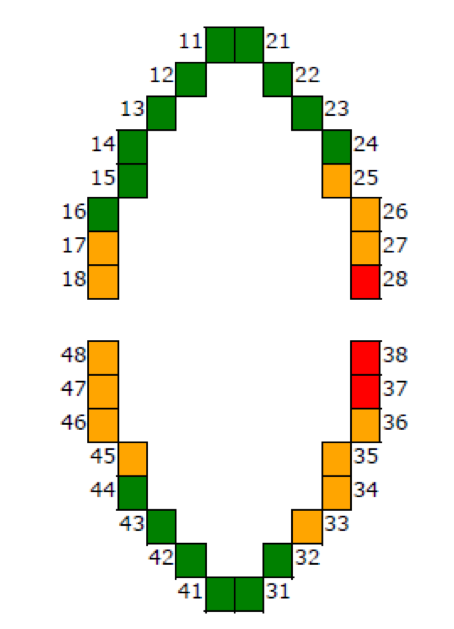Dosimetric Evaluation of Risk of Osteoradionecrosis (DERO): setting-up and first results.
PO-1080
Abstract
Dosimetric Evaluation of Risk of Osteoradionecrosis (DERO): setting-up and first results.
Authors: Marion Renouf1, Grégory Delpon2, Etienne Bardet1, Mélanie Doré1
1Institut de Cancérologie de l'Ouest René Gauducheau, Radiation Oncology, Nantes, France; 2Institut de Cancérologie de l'Ouest René Gauducheau, Radiation Physics, Nantes, France
Show Affiliations
Hide Affiliations
Purpose or Objective
OsteoRadioNecrosis (ORN) is a late complication of radiation for head and neck cancer which can lead to severe sequelae. Predicting ORN is a major challenge. We developed DERO (Dosimetric Evaluation of Risk of ORN), a semi-automatic dosimetric tool which reports doses delivered to tooth-bearing sectors, in a quick and reproducible way. We present the first results.
Material and Methods
Dosimetric data of patients treated by IMRT for head and neck cancer were prospectively submitted to the DERO algorithm. 4 arches corresponding to each 8-tooth sector were semi-automatically generated. 32 cylindrical Regions Of Interest (ROI) corresponding to each tooth and surrounding periodontium were created by linear interpolation. Mean doses (Dmean) of ROI were extracted and included in a data base, along with data about diagnosis, laterality and dose values from organs at risk such as mandible. We focused on mandibular sectors: average Dmean to tooth sectors were grouped into molar sectors (teeth 5 to 8) and anterior sectors (teeth 1 to 4). An individual dose map was generated and delivered to patients and dentists (Fig 1).

Fig. 1. Example of individual dose map generated with DERO
Results
Dosimetric data from 125 patients treated for head and neck cancer with Tomotherapy® were prospectively collected and analyzed: 9 parotid tumors (PA), 41 Sub-Hyoid tumors (larynx, hypopharynx) (SH), 43 Oropharynx tumors (OR), 32 Oral Cavity tumors (OC). Irradiation was unilateral for 100% of PA tumors (9), 12% of OR tumors (5) and 47% of OC tumors (15). All SH tumors were treated with bilateral radiation. For unilateral cervical irradiation, average Dmean in ipsilateral molar sectors was 54 Gy for OC tumors, 45 Gy for OR tumors, 20 Gy for PA tumors. For Oral Cavity bilateral irradiation, Dmean was high in all tooth sectors, 49 to 55 Gy. For SH tumors, Dmean in molar sectors was 27 Gy. A dose gradient of 10 up to 20 Gy was observed between molar and anterior sectors whether radiation was uni or bilateral.
Conclusion
Mandibular molar sectors of Oropharynx and Oral Cavity tumors were exposed to high Dmean of 40 to 50 Gy, especially when irradiation is bilateral. On the other hand, tooth sectors received lower doses for SH radiation. DERO tool guides post-radiation dental care with a personalized dose map for patients and dentists. With data update and patient follow-up, we will be able to determine ORN risk after head and neck radiation.